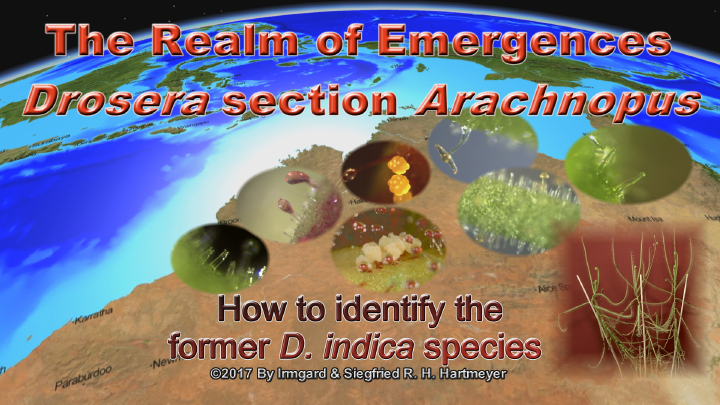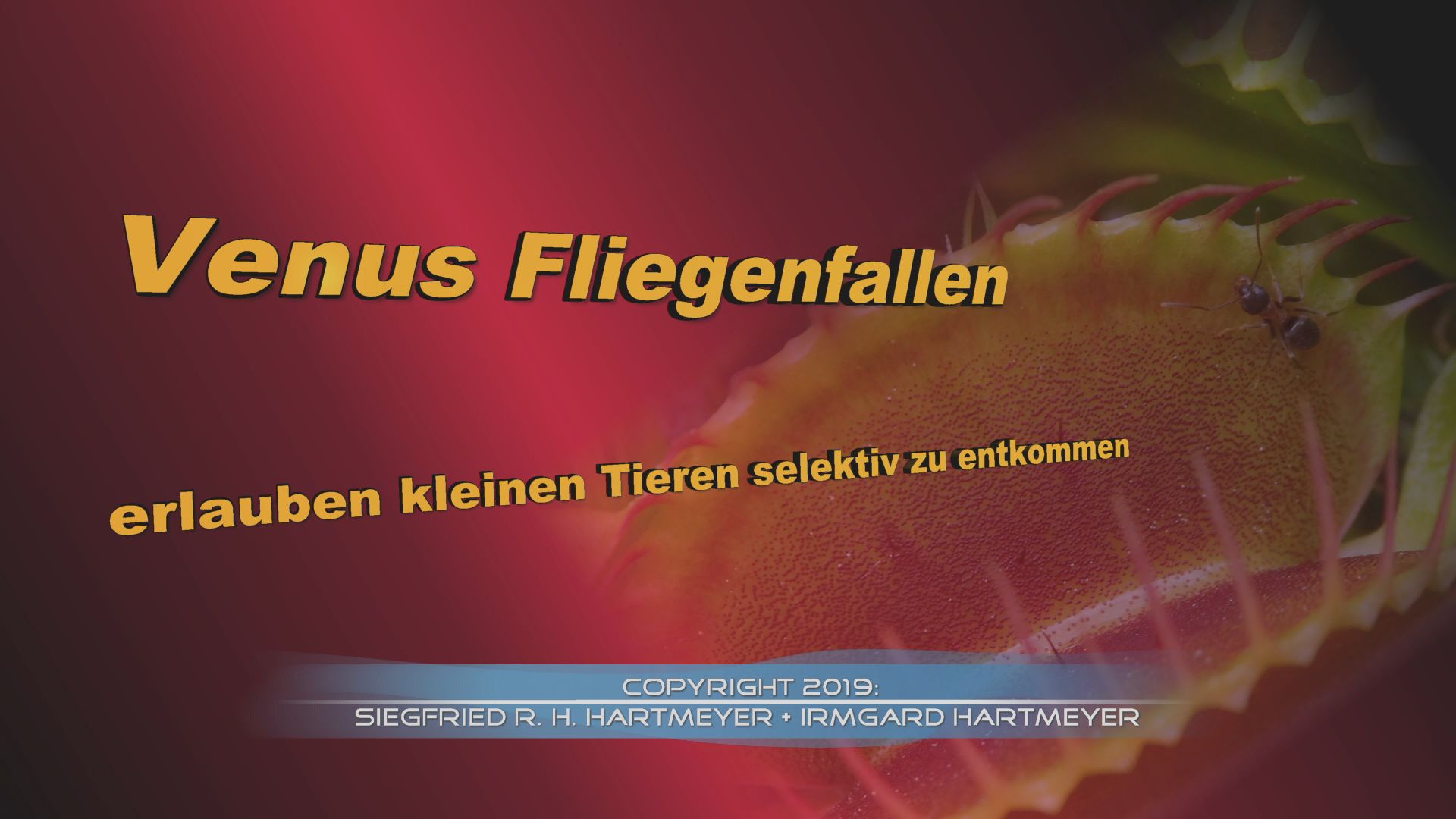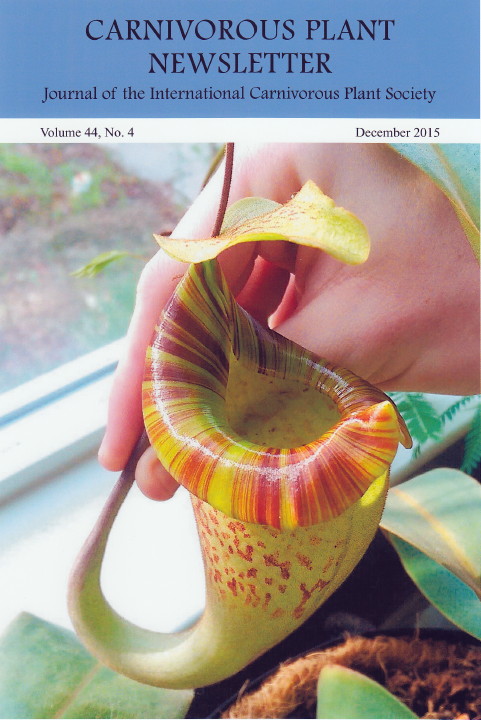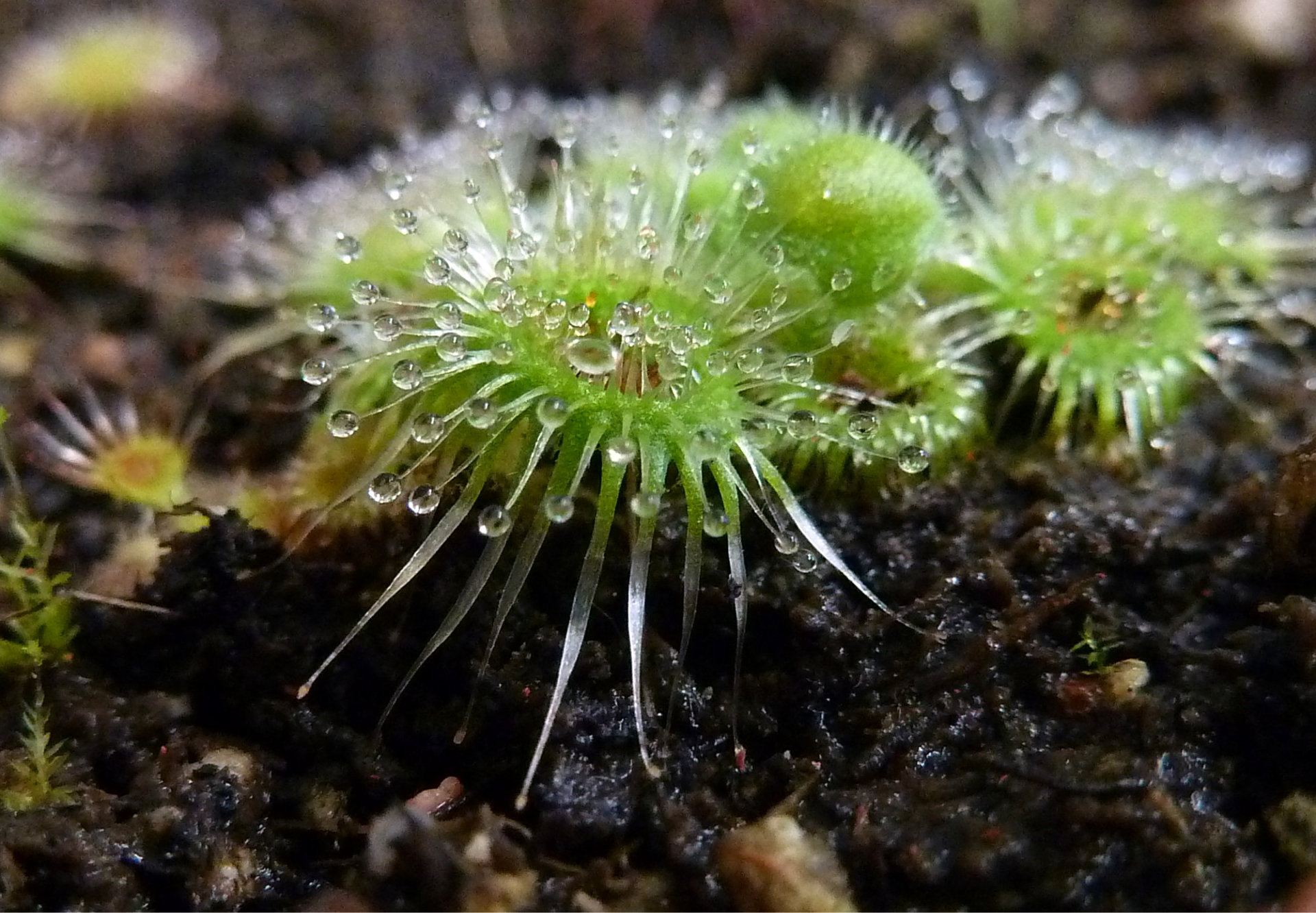Latest Upload 2025 December 16 A short film about our Christmas card.  You have to see it to believe it! Siggi & Irmgard  Greetings from our 46th wedding anniversary (2025) The films on our YouTube channel aim to promote knowledge about carnivorous plants in an entertaining and scientifically based way. They reflect around 50 years of our own experience with carnivorous plants in cultivation and in natural habitats around the world.Our nostalgic travel videos offer exciting journeys through time. More film surprises are waiting to be discovered by you. Have fun clicking through and enjoy! GEZEITENWECHSEL IM HOCHHARZ (Tidal changes in the High Harz Mountains) A book by Christa Hartmeyer  Now online as PDF! The Auschrat and Hartmeyer families from Benneckenstein (Harz) experienced the Nazis, World War II, their escape from East Germany (DDR), and a new beginning in West Germany until reunification. True stories from 1937 to 2000, told by contemporary witness Christa Hartmeyer. The book is now sold out.  Overview of our published articles and related reports.   Offers plants & seeds from our private collection. “Hartmeyers on TV.” "Nosferatu" in Weil am Rhein The curled-leg spider (Zoropsis spinimana, also known as the Nosferatu spider) in Weil am Rhein. Article in the Weiler Zeitung, Oberbadisches Volksblatt, and Markgräfler Tageblatt newspapers dated September 10, 2022. & Zoropsis spinimana in Weil am Rhein (own publication).   The catapult-flypaper trap in public The amazing “prey hurling” of a catapult-flypaper trap was presented to a wide audience at the Regio-Messe Lörrach 2014 in our “Carnivorous Cinema.”
 Catapults in Pygmyland Amazing
results: Pygmy sundews capture minute prey like springtails with rapid
catapult action. Our experiments for this film (English subtitles) show
that Drosera glanduligera is not longer the only sundew with a catapult-flypaper trapping mechanism. Also the snap-tentacles of several pygmy Drosera
act with the speed of a closing Venus flytrap and fling walking prey
from the periphery of the plant onto its sticky leaf. Therefore they
turn out to be actually comparable with the amazing Drosera glanduligera,
however, their catapults are multifunctional and possess a mechanism to
avoid unessential movement: Like the Venus Flytrap. Under our
microscope we examined 22 Drosera and received surprising results.
The article on the film
Siegfried R. H. Hartmeyer and Irmgard Hartmeyer (2015). Carnivorous Plant Newsletter Vol. 44/4:172-184.  Byblis is motile ... and Lindernia? A highlight for CP-enthusiasts! In 2018, first videos by Dr. Gregory Allan (GB) on Facebook showed an active motion of Byblis trichomes.
However, the topic literature describes the carnivorous genus as
immobile. To review that behavior, we made own time lapse shots with a
microscope that turned out to be surprisingly even for ourselves.
They confirm clearly that the unicellular trichome stalks show an active motion down to the leaf surface after being touched by prey. Therefore, we looked up again the work of some CP pioneers like Charles Darwin (1875) or C.A. Fenner (1904), and included their findings and assumptions on Byblis complemented with excerpts from Dr. Gregory Allan's first shots (with his kind permission). We would like to express our thanks to Dr. Gregory Allan, Dr. Jan Schlauer as well as Holger und Anja Hennern for their kind support during the making of this film. YouTube Time travels Siggi & Irmgard private: Review1978 (English subtitles provided)  Hartmeyer's Vulkantour 1980 Recommended for all friends of our family and vulcanoes.  Dinosaurs in Stuttgart Award of the Robert Bosch Stiftung for a Dionaea project in Berlin. The film on YouTube Drosera snap tentacles
In 2009 we upgraded our documentary on snap-tentacles for a CP-project at the
University Würzburg. On YouTube in the German language (click on pictures).
 New articles on the Hartmeyers and their amazing hobby. |
 ©1998-2025 Irmgard & Siegfried R. H. Hartmeyer A complete overview with brief descriptions.  Sundew with Cat's Eyes & Cattleya Eye Candy
Sundew with cat's eyes – this extraordinary plant is the focus of our greenhouse video. Our charming AI presenter Kiava Tar guides us through the film for the first time. Accompanied by impressive footage of the characteristic yellow “light reflectors,” we provide helpful tips on how to successfully solve germination problems. Right at the beginning, you will see a magnificent Cattleya orchid with eight impressive flowers – a real eye-catcher!
Invasive Asian hornets (Vespa velutina) have now reached our garden. Here they encounter a group of European hornets (Vespa crabro) that regularly live in our lilac tree in late summer/fall.
What happens next? A devil's tongue (Amorphophallus konjac)
is forming its colossal flower in our garden. It is a pitfall trap that
attracts insects for pollination with an intense carrion smell and heat
generation, and then traps them. But they are not meant to be eaten;
instead, they are allowed to escape after 1-2 days. They are only
temporarily trapped so that they can be covered in pollen. Supplemented
by detailed shots, we filmed this scenario over several days with our
wildlife camera in time-lapse mode. We hope you enjoy it!
Skulptur 80 - Wenkenhof
The most unusual art event of the 20th century in Switzerland. This exhibition of modern sculptures, also celebrated internationally as the “most unusual art event of the 20th century in Switzerland”, was created at the suggestion of the famous gallery owner Ernst Beyeler, together with the art historian Martin Schwander. Reports about it in the media quickly aroused our curiosity. So we packed our camera and went with Irmgard's parents to the neighboring Swiss town of Riehen. What we experienced there in the extensive Wenkenhof Park was indeed very unusual for that time. Upload 2024 December 14 20 Years Boxing Day Tsunami After
20 years, this film is intended to commemorate the catastrophic tsunami
of December 26, 2004 in the Indian Ocean. Newly created time-lapse
footage, AI-generated scenes and, for the first time, details of our
harrowing flight home complete the first documentary from 2004. 20
years later, we still get goosebumps when we see these pictures. In
December 2024, short excerpts from our recordings were also shown on
TERRA X History (ZDF).
- AI-generated scenes by Norberto Navarro Valiente / via Pixabay -
How to grow Triphyophyllum peltatumThe largest carnivorous plant on earth. Like mostly: English subtitles provided. Adventures with Carnivorous Plants in Australia: FLEISCHIMANIA remastered:
2001 - Carnivorous Plant Maniacs in Down Under. In the final part of our trilogy we find many carnivorous plants with Kirstie Wulf and Greg Bourke in Sydney and the Blue Mountains. More with Trevor Hannam in Cairns, and Drosera schizandra in the jungles of Mount Bartle Frere. In Port Douglas, we are invited to the blues evenings at the Court House Hotel and dive on the Barrier Reef. In the Kimberley CP-paradise near Kununurra, we film an undescribed sundew. Dr. Jan Schlauer explains its special features to us after our return. At the end of 2001 he described and published the new species as Drosera hartmeyerorum. An hour full of exciting experiences in search of carnivorous plants. It doesn't get much more adventurous than that! 1995 - Destination Carnivorous Plants  Our 2nd Australian adventure leads to exciting discoveries of sundews and bugs. Trevor Hannam guides us in the realm of the poisonous Taipans to the - at that time still only described in Down Under - Nepenthes mirabilis. A MUST for Australia fans. 1991 - Beautiful and Hungry!  Let us take you on an adventurous journey through Down Under. Exciting entertainment not only for CP-friends. Featuring Allen Lowrie, Marilyn Minon and Trevor Hannam. Copper foil to fight Tiger Mossies  Devil's Claws are Bug-Plants. A Spontaneous Mutualism.  European Mirids on American Plants. Drosera glanduligera in Guinness World Records 2021 
 The fastest carnivorous plants show what they are able to do. A very special competition. Symbiotic bugs living on carnivorous plants in tropical Australia
The Realm of Emergences: Drosera Sektion Arachnopus 
Untangling The Indian Sundew Muddle 
 On CP-tour with Stewart McPherson
On CP-tour with Stewart McPhersonStew's
trips to the Tepuis of Venezuela and their fascinating fauna and flora.
A collaboration with the famous author of CP-books, who kindly provided
us his raw film-footage for the editing and production of this
documentary. We show all species of Heliamphora (described until 2010).
DVD descriptionThe English movie as playlist on YouTube CP-books and more by Stewart McPherson  Drosera: Snap-tentacles and Runway Lights. Our examinations on sundew tentacles from 1994 to 2010. DVD YouTube Drosera glanduligera Publication in CPN General view with microscope pictures Siggi Hartmeyer's performance at TV total. Click on the photo or text to view the broadcast on Comedy meets Carnivorous Plants. Germany's popular entertainer Stefan Raab questioned Siggi on "the personal sensitivities of carnivorous plants". A very special lesson. Here is much room for a lot of laughter. More informationen at our page "The Hartmeyers on TV".
|














 Plants can do much more than most people think. Plants lure and
lie, they warn and defend themselves, and they know how to orienteer.
With each new study, botanists discover more fascinating skills. For
example, plants are able to distinguish colors and smells. They
communicate with each other and with animals. They recognize who is
feeding on them and react with precisely tailored defense strategies.
The guest on Planet Wissen is nature filmmaker and journalist Volker
Arzt, who succeeded in making an award-winning film with "Kluge
Pflanzen" (Clever Plants).
Plants can do much more than most people think. Plants lure and
lie, they warn and defend themselves, and they know how to orienteer.
With each new study, botanists discover more fascinating skills. For
example, plants are able to distinguish colors and smells. They
communicate with each other and with animals. They recognize who is
feeding on them and react with precisely tailored defense strategies.
The guest on Planet Wissen is nature filmmaker and journalist Volker
Arzt, who succeeded in making an award-winning film with "Kluge
Pflanzen" (Clever Plants).